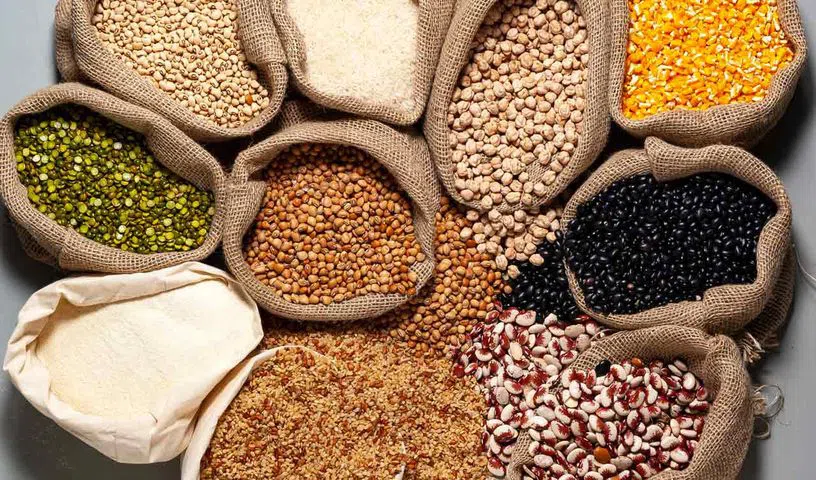
Achieving self-sufficiency in pulse production will be a sustainable path to India’s nutritional needs
By Barun Kumar Thakur, Shreenidhi Manigandann, Samvardhini Ravindra
The Union Budget 2025 encourages “rural resilience and prosperity” to uplift the rural economy, especially in the area of infrastructure, employment generation and women empowerment through skill development, investments and technology adoption.
The Mission for Aatmanirbharta in pulses and sustainability is an example of promoting resilience and prosperity, and addresses the need for India to become self-reliant in the production of the commodity (specifically tur, masoor and Urad) by 2029.
Costs and Benefits
The benefits of producing pulses range from financial, environmental to promotion of the domestic economy through the import substitution effect that will occur by the shift from being one of the biggest importers of pulses to producing it locally.
Pulses do not require much water and can act as a catalyst to reduce the practice of water-intensive crops. This indicates environmental benefit not only in saving water but also in cutting down the production of rice and cereals, which are water-intensive crops, thereby helping reduce groundwater depletion in States like Punjab, Haryana, and Rajasthan. The Stage of groundwater extraction (SOE) stands at 163.76% for Punjab, 148.77% for Rajasthan and 135.74% for Haryana. Thus, the production of pulses, at least in rotation to seasonal crops, can allow for lesser water stress and will be a sustainable alternative too.
Production and Consumption
India is one of the major exporters of pulses, but also imports a considerable amount of the same. The Indian Council of Agricultural Research (ICAR) estimates that the domestic demand far exceeds the production, thereby leading to increasing imports. However, the reasons for the supply deficits are linked to the historical and financial importance given to rice and cereals. The Green Revolution provides lesser weightage to crops like pulses that face resistance from farmers in adapting to the changes in the Minimum Support Price (MSP).
Mitigating supply chain inefficiencies, advocating for high-yield and climate-resilient seeds, and facilitating knowledge transfer among farmers are essential
Another reason for the low production is the lower yields and price volatility, which leads to a fall in the demand for new seeds. Outdated seeds are used for new harvests, which is reflected in the low replacement rate of seeds. This indicates that the same seeds have been used for five years, contradicting the government’s goals of promoting new high-yield and climate-resilient seeds. This, in turn, lowers the production capacity, leading to a vicious cycle of low rural resilience of production and high reliance on imports.
To meet this challenge, it is imperative for the government to create an efficient system to educate farmers on the benefits of producing sustainable and productive cultivation of seeds. This is also crucial to ensure that the nutritional needs are met, keeping in mind its value in the Indian diet.
Schemes with the same broader self-sufficiency goal as the ‘Aatmanirbharta Mission’ can be launched, like the recently proposed inter-cropping. Intercropping of pulses with sugarcane, which was implemented in 12 States in 2018, is considered to be one way to encourage the cultivation of pulses. It allows farmers to utilise the same land more efficiently, increase overall pulse production, as well as reduce soil degradation and contribute to long-term environmental goals.
Pulses and Nutrition
The growing concern for health and nutrition has made it imperative to ensure the quality of food on people’s platter. The first step towards achieving this is to influence agricultural production. The International Food Policy Research Institute (IFPRI) says that the focus on cereals as the main part of our diet has led to a disproportionate consumption, neglecting pulses. This is leading to the all-too-common protein deficiency that can be found across the demography, especially among those who consume a vegetarian diet.
Rural and urban areas witnessed a decline in consumption expenditure of pulses by 5.86% and 2.94%, respectively. The overall consumer basket expenditure for pulses has fallen in 2023-24, indicating essential nutrients are not met. To combat this, changes can be made at the cultivation area, firstly, where we move from being cereal-heavy production to a more pulses-heavy production.
This can help improve the availability in the market, thereby acting as a demand-driven supply, which in the long term would allow for better health of the citizens, enhancing productivity and well-being. Apart from the Aatmanirbharta Mission and initiatives by the ICAR, there is also a need for sound information and a check system by the government for better implementation at the grassroots level.
Import-Export Dynamics
With Aatmanirbharta Mission, India will reduce its dependence on the import of pulses by 2029, which doubled to $3.74 billion with the domestic production estimated to be around 234 lakh tonnes. The government decided to hike the MSP of gram and mustard in absolute terms to increase production and make India self-reliant. With the current instability in the global trade market, and factors like pandemics and wars, there is a need for a paradigm shift from international procurement to a market more reliant on domestically produced supply.
From an environmental lens, the import of pulses contributes to the carbon footprint through transportation, which accounts for 20-30% of greenhouse gas emissions. The emission from food miles (the distance food travels from production to consumption) is 3 gigatonnes of CO2 equivalent. Focusing on the domestic production of the pulses would reduce these emissions and help in achieving net-zero emissions by 2070. Producing pulses domestically will require shorter and more efficient transport, minimising the carbon footprint.
Way Forward
The Budget prioritises pulse production and sustainability through rural development, food security and environmental resilience. This would minimise import reliance, stabilise food prices, and augment farmer incomes by promoting indigenous production. Furthermore, environmental advantages — soil enhancement, water preservation and reduced carbon emissions — emphasise sustainability.
Achieving self-sufficiency in pulse production involves more than just financial incentives. Mitigating supply chain inefficiencies, advocating for high-yield and climate-resilient seeds and facilitating knowledge transfer among farmers are essential for sustained accomplishment.
Crop diversification, intercropping, and enhanced market linkages should be further included to provide pulses a feasible and appealing alternative to water-intensive crops. Finally, a balanced policy strategy that combines economic incentives with environmental sustainability will be crucial for developing a resilient agriculture industry.







